
Review on 📸 Pacific Image PrimeFilm XAs Super Edition 35mm Slide & Film Scanner with Advanced Automation, 10000 DPI by Bob Moonin

Inconsistent results
Working. It really works. Unfortunately, that rarely works. Pros: • Ability to get very clear scans • Theoretical possibility of batch scanning • Good color • Focus! Both automatic and manual Cons: • Slow scanning • Although batch scanning is possible - results tend to suffer • Film transport issues • Random visual/optical issues like vertical and horizontal stripes - they are incompatible, which I think is worse • Potential macOS compatibility issues - or maybe the scanner is just weird, I'm shooting a combination of 35mm, medium and large format. I bought this scanner because I knew it wouldn't help me with medium or large formats, but I was hoping it would help me get the best possible results when working with 35mm documents, and sometimes at all Not. he did just that. Trouble is, the scanner also had an endless array of oddities, conflicting results, and obvious problems. Before purchasing this scanner I was scanning on an outdated Canon flatbed or occasionally used a digital camera, macro lens and light table. And this scanner was definitely an upgrade over those tools. When I first started using the scanner I was a bit surprised at how slow and noisy it was compared to my old Canon tablet, but my first roll was impressively sharp and the colors were better. Than anything I've ever gotten before I've never gotten to grips with the copy of SilverFast that came with the camera, but I have Vuescan, which works pretty well. However, the problems with this scanner started on day one. I quickly realized that there was a VERY specific order I needed to do things in order to get this scanner working. I'm not sure if this is an issue with MacOS or with the scanner in general. If I wanted to scan something, I found that I had to plug the scanner into my computer, turn on the scanner, wait for it to warm up, THEN turn on Vuescan (same problem with Silverfast). If I did any of these out of order, the program wouldn't recognize the scanner. Also, any interruption would mean I would have to repeat the process, which took about 5 minutes on average. It wouldn't be a big problem, except very often the scanner would shut down in the middle of a scan and I would have to stop everything and go back to the 5 minute startup process. Batch scanning with this scanner is very well documented, so I won't go into detail about it here. Suffice it to say that you can batch scan, but it saves very little time. Two reasons: 1. The scanner is quite slow, especially at higher resolutions.2. Film transport is not always very precise, which can result in the entire roll shifting a few millimeters per frame. It cascades and causes other issues with everything from exposure and color balance, focus issues, framing issues, etc. to frame-by-frame scanning. I also had weird intermittent streaking issues. The worst is usually a dark band about 10% wide running down the middle of my scans. This happens randomly, removing the film and rescanning usually solves the problem, but not always. I had this problem in both Vuescan and Silverfast. Sometimes I scan half a strip with no problem, then the problem appears and doesn't go away no matter what I try. This is particularly problematic as sometimes it's not very visible on the actual scan, but it shows up once I add some contrast to the post. Also, some horizontal stripes or other digital artifacts appear from time to time. This is usually in light areas - denser areas of the film. I have found that increasing the "Analog Gain" in the scanning software sometimes helps me to solve the problem, but not always and often at the expense of thinner areas on the negative. This is a problem for me because I tend to create slightly dense negatives for my enlarger. The other BIG issue I have with the scanner is how it handles curved or curled negatives. Even a slight bend in the film can create chaos during scanning. The scanner has a very narrow focus range, so a small distance difference between the sensor and the film can cause a HUGE focus problem due to curvature. There are also issues with color or exposure changes. To some extent, this is a problem with most scanners, but it's particularly pronounced with XA. I started ironing out my negatives within 2-3 days of processing to mitigate the problem. However, this is a problem. I ended up getting the Epson V850 to work with medium and large format. and to be honest I like it a lot for 35mm too. XA gives sharper results and maybe nicer colors. but only if it is so. The Epson is better and faster at batch scanning, and while detail isn't quite as good as the XA, it more than makes up for it in consistency. I really wanted to love this scanner, but the juice just isn't worth squeezing.
- New
- Slightly torn
New products
Comments (0)
Top products in 🔍 Slide & Negative Scanners

📷 DIGITNOW 22MP Film Scanners: Convert 126KPK/135/110/Super 8 Films, Slides & Negatives into Digital Photos, All in One Scanner with 2.4" LCD Screen and 128MB Built-in Memory

9 Review
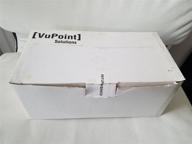
📸 Transform Your Memories: VuPoint Solutions Digital Film and Slide Converter (FC-C520-VP)

9 Review

Plustek OpticFilm 8200i SE scanner black

16 Review
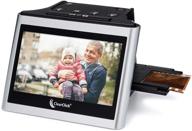
📸 ClearClick Virtuoso 2.0 22MP Film & Slide Scanner, 5" LCD - Convert 35mm, 110, 126 Slides/Negatives to Digital Photos

9 Review
Another interesting products
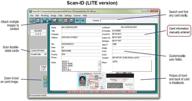
💳 Windows Medical Insurance and ID Card Scanner with Scan-ID LITE

10 Review
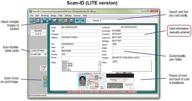
📸 Duplex Medical Insurance Card and ID Card Scanner with Scan-ID LITE for Windows

8 Review
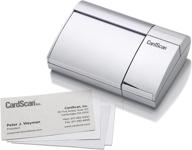
📇 DYMO Canon CardScan Personal v8 Card Scanner compatible with 32-bit operating systems

9 Review
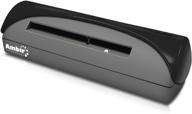
📇 A6 Card Scanner - Ambir Technology PS667 Simplex

8 Review

